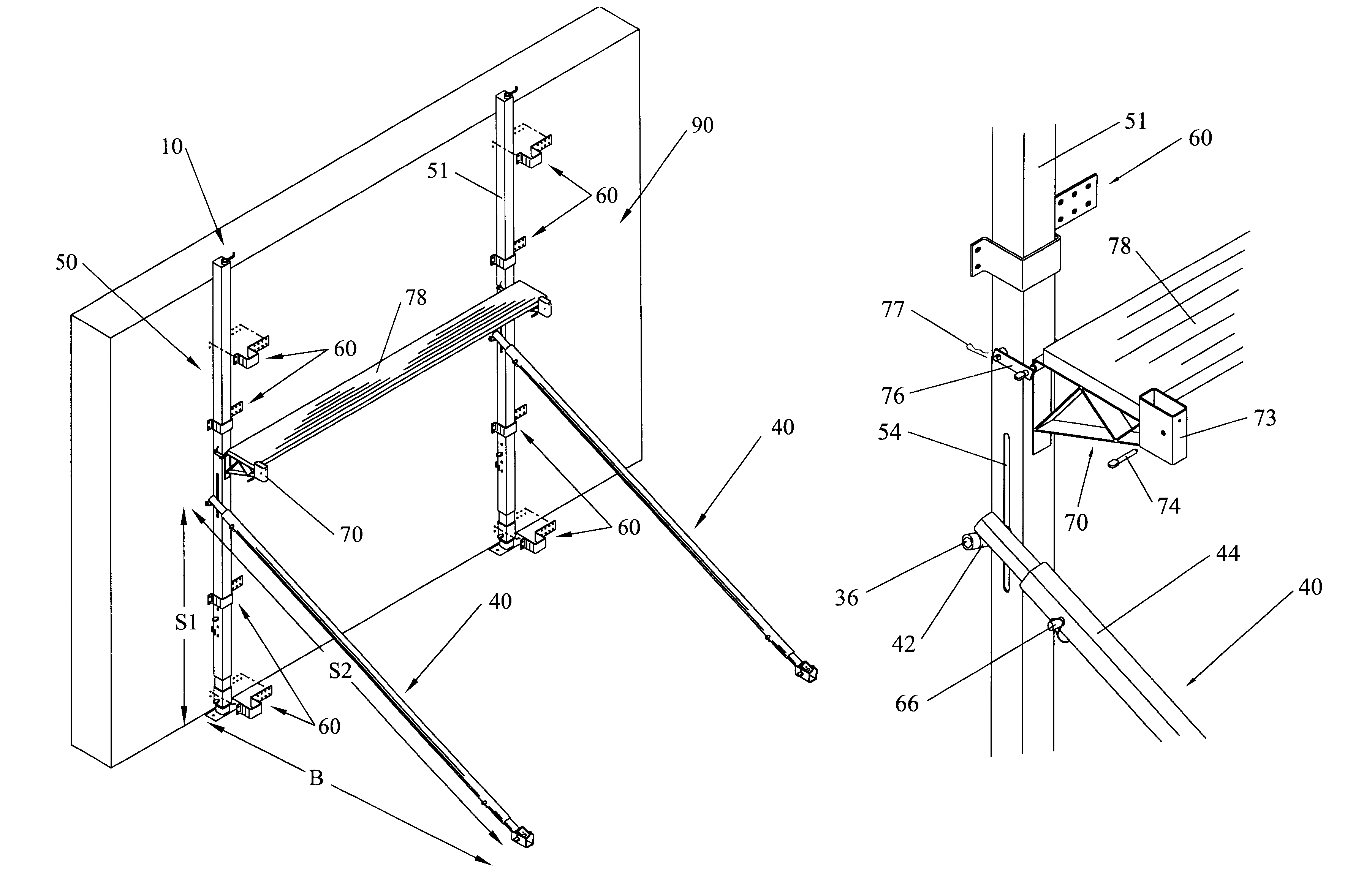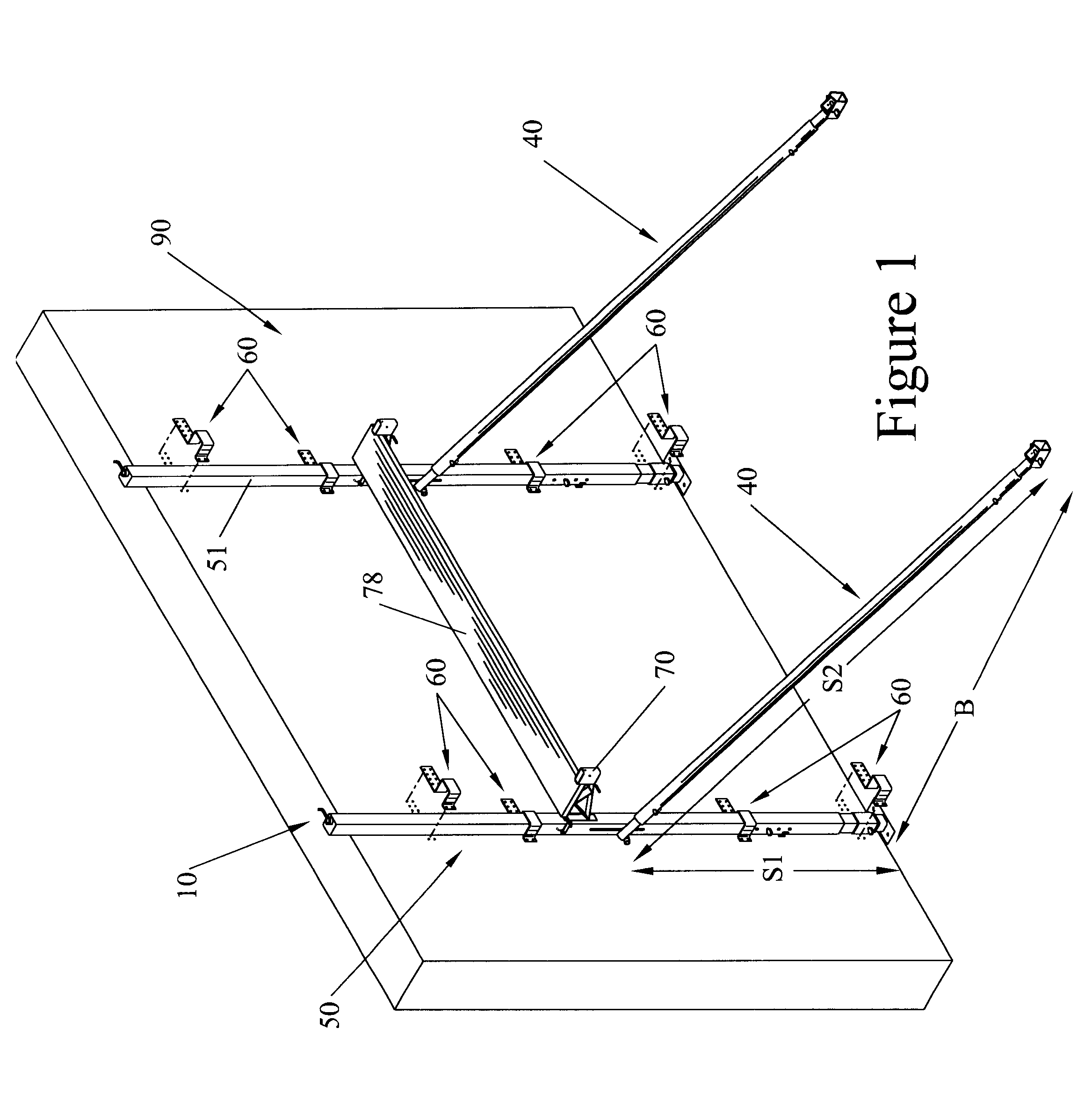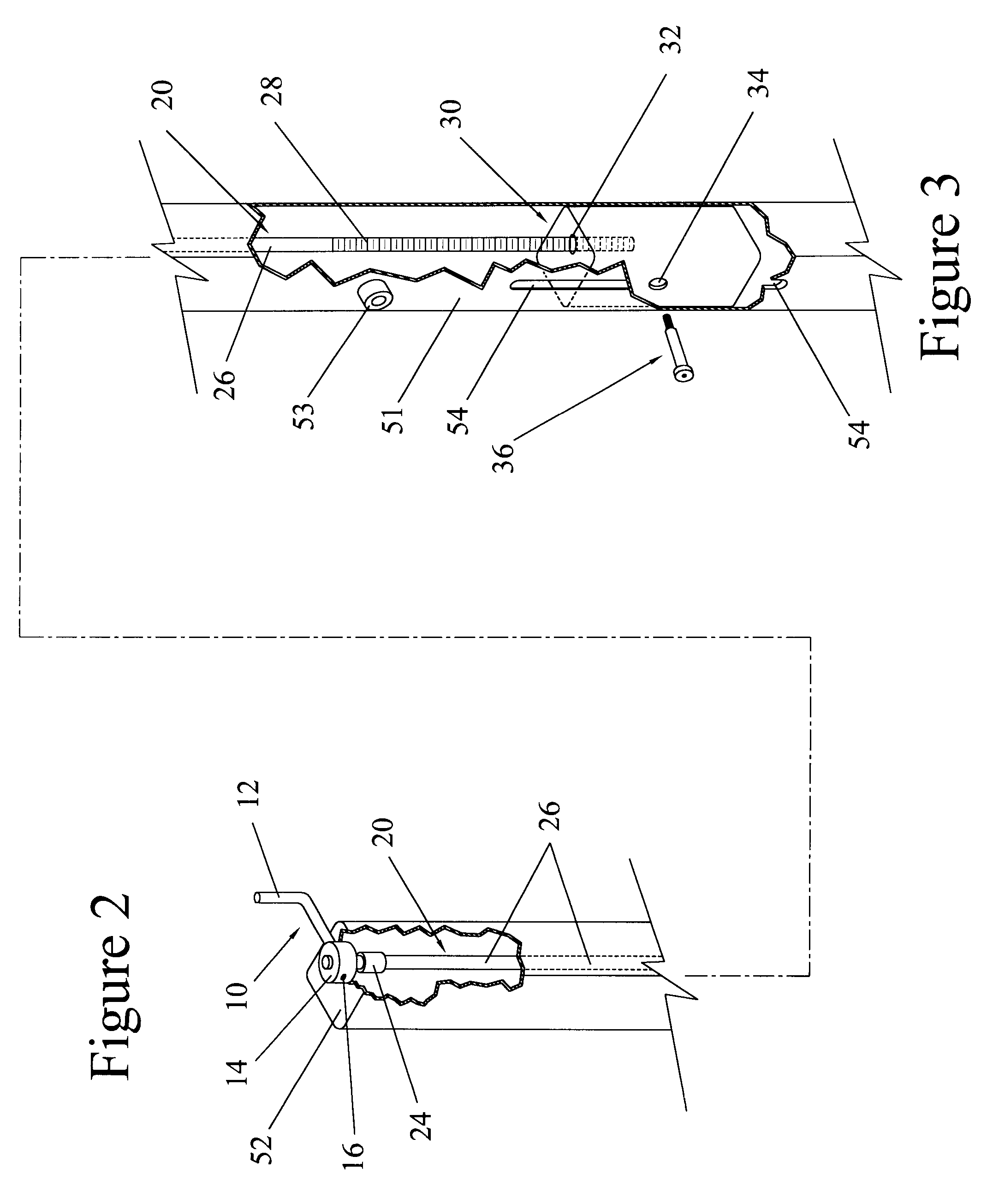Adjustable scaffold used with concrete-receiving forms
a technology of adjustable scaffolds and concrete, which is applied in the direction of scaffold accessories, building repairs, applications, etc., can solve the problem of limited adjustmen
- Summary
- Abstract
- Description
- Claims
- Application Information
AI Technical Summary
Benefits of technology
Problems solved by technology
Method used
Image
Examples
Embodiment Construction
The conformity of the present invention, when in use, is shown on FIG. 1 where two units of the preferred embodiment of the present invention are shown supporting and straightening wall 90. Wall 90 (shown with more detail on FIG. 6) is made up of interlocking expanded polystyrene-construction-blocks 92 that customarily are manually stacked and interlocked so that the block's imbedded studs 94 lie along a series of vertical lines. An example of a suitable interlocking expanded polystyrene-construction-block 92 is described in U.S. Pat. No. 5,428,933.
Each unit of the preferred embodiment of the present invention includes crank 10 (to which mechanisms to be described latter are attached) at the top of vertical-member 50 (which is placed essentially vertically against wall 90 and maintained there by P-brackets 60 (which are attached to studs 94)) and brace 40. Platform 78 is held by two or more platform-brackets 70, which extend from, and are supported by, each vertical-member 50.
Longit...
PUM
 Login to View More
Login to View More Abstract
Description
Claims
Application Information
 Login to View More
Login to View More - R&D
- Intellectual Property
- Life Sciences
- Materials
- Tech Scout
- Unparalleled Data Quality
- Higher Quality Content
- 60% Fewer Hallucinations
Browse by: Latest US Patents, China's latest patents, Technical Efficacy Thesaurus, Application Domain, Technology Topic, Popular Technical Reports.
© 2025 PatSnap. All rights reserved.Legal|Privacy policy|Modern Slavery Act Transparency Statement|Sitemap|About US| Contact US: help@patsnap.com



